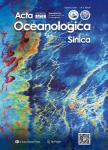Impacts of Early Pleistocene glacial vicariance among refugial lineages and Mid-Late Pleistocene interglacial dispersal and expansion on forging population genetic structure of the giant clam Tridacna squamosa(Bivalvia:Cardiidae:Tridacninae)across the Red Sea and Indo-West Pacific oceans
作者机构:Laboratory of Human Genetics(LR99ES10)Faculty of Medicine of TunisUniversity Tunis El Manar 1068Tunisia
出 版 物:《Acta Oceanologica Sinica》 (海洋学报(英文版))
年 卷 期:2024年第43卷第8期
页 面:111-127页
核心收录:
学科分类:070903[理学-古生物学与地层学(含:古人类学)] 0709[理学-地质学] 07[理学]
主 题:Mollusks Red Sea and Indo-Pacific evolutionary and biogeographic histories mitochondrial DNA Pleistocene glacial refugia interglacial dispersal and expansion
摘 要:This study aims at identifying the microevolutionary processes responsible for the onset of the remarkable phylogeographic structure already recorded for the endangered giant clam Tridacna squamosa across its distribution *** this purpose,the evolutionary,biogeographic and demographic histories of the species were comprehensively reconstructed in a mitochondrial dataset comprising nearly the whole available published cytochrome c oxidase 1 gene sequences of *** higher level of genetic diversification was unveiled within ***,in comparison to earlier macro-geographic investigations,whereby five mitochondrial clusters were *** resulting divergent gene pools in the Red Sea,western Indian Ocean,Indo-Malay Archipelago and western Pacific were found to be driven by Early Pleistocene glacial vicariance events among refugial *** genetic diversification of the species across the Indo-Malay Archipelago was successively triggered by historical dispersal event during the Mid-Pleistocene MIS19c *** latter historical event might have also enabled genetically distinct giant clams from the Indo-Malay Archipelago to subsequently colonize the western Pacific,accounting for the genetic diversity hotspot detected within this region(comprising three divergent mitochondrial clusters).Late Pleistocene demographic expansion of ***,during the Last Interglacial period,could have contributed to forging spatial distribution of the so far delineated genetic entities across the Indo-Western ***,being resilient to major climate shifts during the Pleistocene through adaptation and consequent diversification,*** could be used as a model species to track the impact of climate change on genetic variability and structure of marine *** particular,the new information,provided in this investigation,may help with understanding and/or predicting the consequences of ongoing global warming on genetic poly



